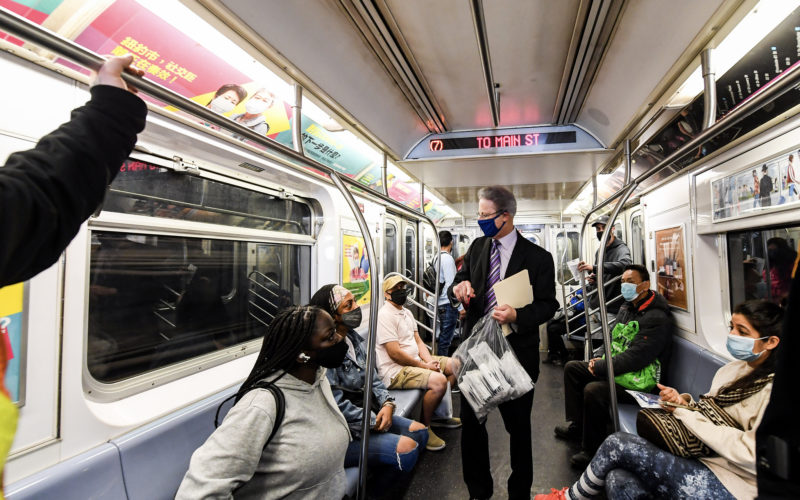
Last week, New York City Mayor Bill de Blasio appointed a new Planning Commission Chair, Carl Weisbrod, and hinted at what he portrayed would be a new emphasis on economic justice in planning. Dana Rubenstein of Capital New York quoted the Mayor saying he wants “the planning process to achieve a bigger set of strategic goals. That includes the creation of affordable housing, that includes facilitating job development, that includes trying to address inequality.”
In laying out his ambitions, the Mayor also took an unwarranted swipe at the previous Chair, Amanda Burden, saying she “had a very different strategic vision of what city planning is.” Burden and Weisbrod are both accomplished and respected individuals, and the luster of one does not depend on a critique of the other. But is the vision that the Mayor offers truly strategic and an improvement over the past, and can urban planning really achieve his stated goals regarding inequality?
Broadly speaking, the Mayor is right to recognize the social and economic justice dimensions of urban planning. Across our country, zoning and housing ordinances can play a pernicious role in reinforcing exclusion, whether it is a suburban jurisdiction requiring property lots to be a minimum of 15,000 square feet per house in order to effectively ban anyone who can’t afford a mansion, or an ostensibly progressive jurisdiction like San Francisco imposing regulatory procedures which effectively inhibit the construction of new housing for all levels of income. Zoning and related regulations can get misused to advantage the haves and disadvantage the have-nots, and public infrastructure like transit, parks, and good schools are also often unfairly distributed.
Amanda Burden, a planner at heart and by profession, knew that. She rezoned areas of the city for more housing and championed greater public spaces for all. Most of the districts she rezoned were chosen because of their good existing transit access, while rezoning of the Brooklyn and Queens waterfront was conditioned on the provision of new transit, ferries. Burden’s awareness of social justice was reflected in other equity-oriented policies developed under her leadership: zoning bonuses to encourage retailers to open grocery stores in areas lacking food businesses and a push to update codes to enable more small units suitable for lower price points.
But we should be frank about spatial planning’s limitations in addressing inequality. Zoning and regulation – the main tools the planner has – create the physical setting for economic success and social justice, but can’t directly create those outputs. The zoning code can allow the theoretical capacity for more affordable apartments to be built, but it takes investment to actually build them. The zoning map may delineate industrial areas, but that act alone doesn’t guarantee that businesses in those zones can successfully compete with businesses in New Jersey and Sri Lanka, and thus provide accessible employment. The city code can mandate that new developments incorporate transit and parks, but it’s the injection of dollars, not the planning mandate alone, that makes that infrastructure real.
Given these limitations, a worrisome portent in assigning the Department of City Planning the job of “addressing inequality” is that such a mission could encourage random interventions in the hyper-specific development review process, rather than strategic action in the planning process. Transactional planning, where the city exacts ad hoc concessions from the applicant in exchange for granting ad hoc permissions, is idiosyncratic and episodic, not systemic, and can be a distraction from the neighborhood-scale and citywide dimensions of urban planning policy that the Commission should spend most of its energy on. Whether the public and private exactions and concessions in any particular deal are fairly balanced is usually anyone’s guess, and such deals are unlikely to have a transformative influence on economic justice across the city.
For example, without a strategic approach, integrating transit may or may not figure into specific development deals. One instance, again during Burden’s term, was the rezoning of Hudson Yards on the west side of Manhattan being made contingent on the developers contributing financially to the extension of the #7 subway train to the site. That deal brought the subway to the Far West Side, and bravo for that, but it didn’t do anything for the people in eastern Brooklyn waiting for slow, unreliable buses. Nor can that type of transaction be replicated in other parts of the city with lower land values. The extension of the #7 “is a good thing,” as our office neighbor Martha Stewart would say, but it’s not a systemic thing.
City planning’s impact in advancing social and economic justice will be more far-reaching and durable when exerted in strategic, citywide planning and policy, rather than improvised case-by-case during the horse-trading of the development review process. Just as “real estate development” should not be invariably conflated with true “economic development,” the Planning Commission should be looking for lasting value, not short-term symbols.
 On the Brink: Will WMATA’s Progress Be Erased by 2024?
On the Brink: Will WMATA’s Progress Be Erased by 2024?
The experience of being a WMATA rider has substantially improved over the last 18 months, thanks to changes the agency has made like adding off-peak service and simplifying fares. Things are about to get even better with the launch of all-door boarding later this fall, overnight bus service on some lines starting in December, and an ambitious plan to redesign the Metrobus network. But all of this could go away by July 1, 2024.
Read More What’s Going on With Transit Service at the Seven Highest Ridership U.S. Cities? NYC Edition
What’s Going on With Transit Service at the Seven Highest Ridership U.S. Cities? NYC Edition
New York City Transit’s service levels have remained remarkably strong throughout the pandemic. Crew operator availability remains the agency’s biggest challenge, as well as adjusting weekend maintenance schedules in order to run service that matches strong weekend demand.
Read More